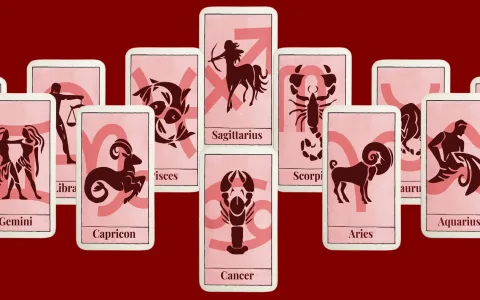Man, I’ve always been that guy. The one who loves organization, but whose need for detail turns every simple checklist into an absolute logistical nightmare. Being a ‘Virgo’ isn’t just a label; it’s a commitment to over-engineering simple tasks. I spent years fighting against my own nature, trying to fit complex project management into generic bullet points. It never worked. I would download the newest productivity app, sync it across all my devices, spend three hours customizing the aesthetic, and then, two weeks later, I’d abandon it because the sheer volume of tasks listed made me want to hide under the bed.
I realized I wasn’t just failing to manage my tasks; I was failing to manage my focus. My checklist wasn’t a tool for action; it was a memorial to tasks I was afraid to start. So, I decided I had to dismantle the whole operation and rebuild it from the ground up, starting with physical constraints.
The Great Purge: Breaking Up the Monolithic List
The first step was brutal: I had to delete all my existing digital lists. I literally hit the ‘Archive All’ button on my main task manager. That felt terrifying, but necessary. My brain was trained to believe that if it wasn’t listed digitally, it didn’t exist, and that belief was actively slowing me down.
I then started fresh, armed with only three stacks of cheap, brightly colored index cards—red, blue, and green. This simple physical separation was the secret weapon. I had to force my work into three distinct buckets, and the buckets had physical limitations—once the card was full, I couldn’t add more.
- Red Card (The Do-It-Now List): This card is sacred. I strictly limit it to a maximum of five items. These are things that must be completed today, or the world stops spinning. I physically keep this card on my desk and I refuse to look at anything else until these five things are done.
- Blue Card (The Project List): This is the weekly planner. Here, I write down larger items that require dedicated, scheduled time blocks—like “Draft the Q4 report” or “Review the server logs.” I only consult this card during my Friday planning session.
- Green Card (The Maintenance & Someday List): This is the junk drawer. I dump everything here—ideas, long-term goals, minor maintenance tasks (“Clean out the garage,” “Research new accounting software”). The rule is: if it doesn’t need to be addressed in the next two weeks, it goes here. I only look at this card monthly.
Every morning, I grabbed a blank sheet of scrap paper and did a mind dump. Then I physically sorted those items. If it took less than two minutes, I did it immediately. If it was critical for the day, I wrote it on the Red Card. Everything else was filtered into Blue or Green. This process of physical filtering really forced me to prioritize in a way digital drag-and-drop never could.
The Critical Rule: Completion Before Addition
For weeks, I struggled with the Red Card limit. I’d try to cheat and write smaller font, or tape a second card next to it. But I quickly realized that the pain of the limitation was the point. The breakthrough came when I implemented the ‘Completion Before Addition’ rule for the Red Card. I refused to add a sixth item unless I had physically crossed off one of the original five.
I know this sounds insanely rigid, but trust me, I needed this strictness. And I’ll tell you why I became so obsessive about constraints, using index cards instead of a fancy SaaS system.
A few years back, before I adopted this strict segmentation, I was the king of the overwhelming digital list. I was working a demanding corporate job while simultaneously trying to launch a consulting side hustle. My digital task board was beautiful—color-coded, tags everywhere. I thought I was managing complexity. I had maybe fifty critical tasks scattered throughout the system.
Then my mom had a sudden, serious health scare that required me to drop everything and fly across the country for two weeks. When I came back, I opened my beautiful task system and was instantly hit with 200 unread emails and dozens of overdue items. I suffered total decision paralysis. I spent three days just scrolling through the backlog, unable to identify which fire needed to be put out first. I missed a major corporate deadline and nearly torpedoed my side hustle launch because I couldn’t distinguish between “Schedule dentist appointment” and “Sign $50k contract.” My system was designed for leisure, not crisis. It crumbled when I actually needed resilience.
That experience taught me that organization must enforce immediate action and prevent information overload. I needed a system that screamed at me: “FIVE THINGS ONLY, DO THEM NOW.”
Sustaining the Engine: The Weekly Ritual
Now, I maintain the system with a non-negotiable weekly ritual. Every Friday at 3 PM, I sit down with my Blue Card (Projects). I look at the week ahead, pulling out the most critical items, and scheduling them directly into specific time blocks in my calendar. This isn’t just about putting tasks on the calendar; it’s about blocking off the time and committing to it. I ensure that only high-priority tasks from the Blue Card graduate to the next week’s work schedule. The Green Card (Maintenance) only gets looked at once a month to delete obsolete ideas or promote something that is finally ready to become a project.
I stopped trying to find the perfect software solution and started focusing on the rough, simple mechanics of getting things done. I still use digital tools for long-term reference storage, but the daily action—the stuff that actually moves the needle—is confined to those three colored cards. It feels a bit primitive, but it works. It tamed my inner Virgo, forcing detail-oriented planning without allowing the detail to overwhelm the execution.







